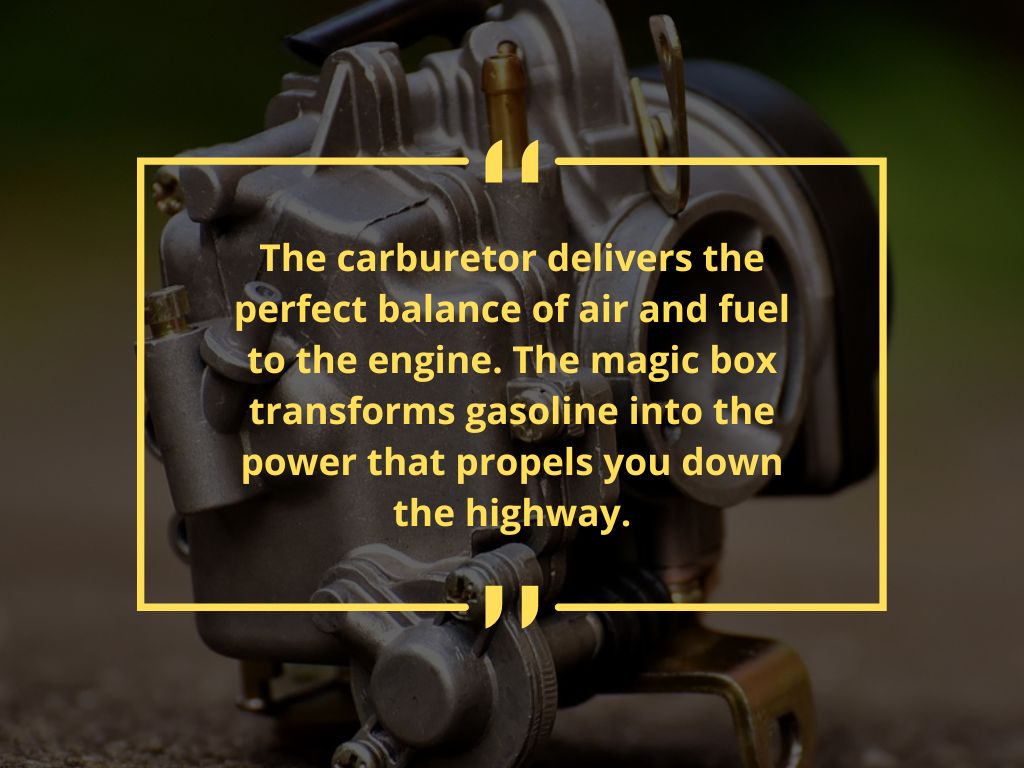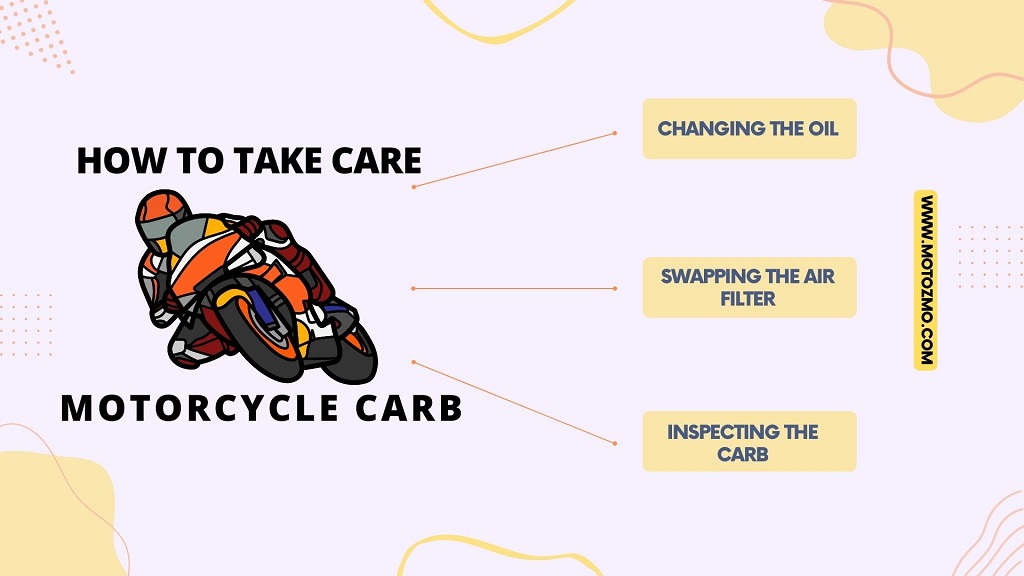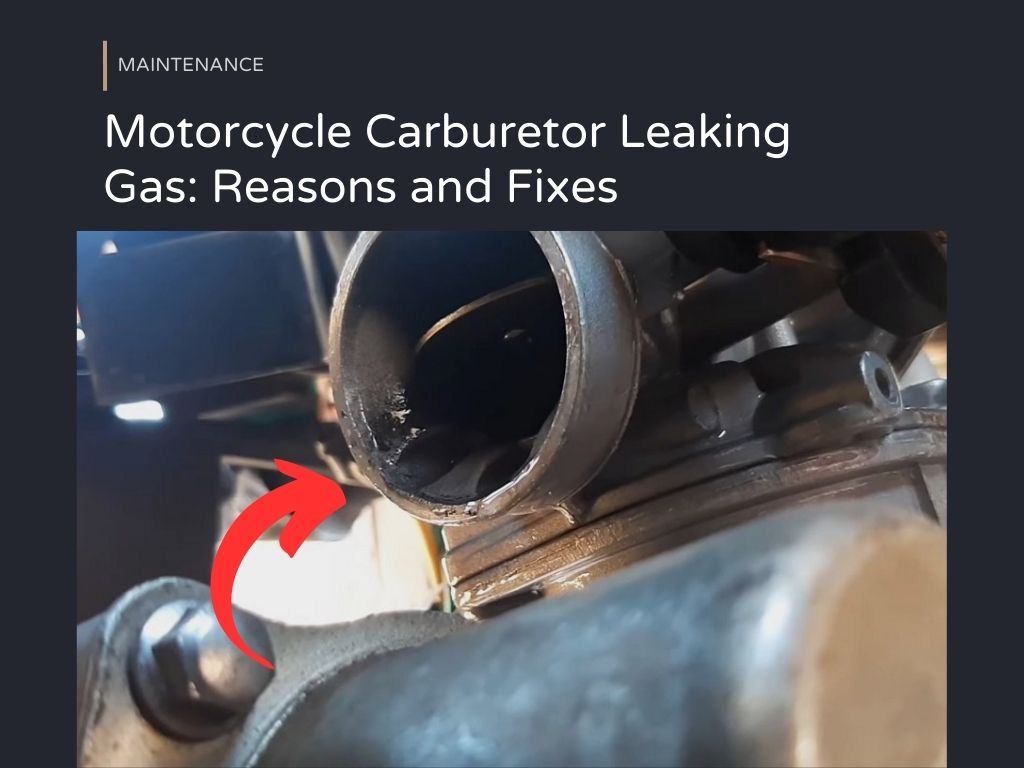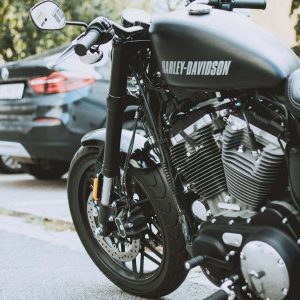A puddle of gas under your motorcycle is bad news. A motorcycle carb leaking gas is not only a waste of money, but it can also damage your engine and be a fire hazard.
The causes of carb leaks can vary, from a loosened fuel petcock or needle valve to a crack in the float bowl or a worn-out seal or gasket. The key is not to ignore the issue. Even small leaks worsen over time and can lead to more significant problems.
In this post, we’ll break down the common reasons behind a leaky motorcycle carb and guide you through simple fixes you can tackle yourself. We’ll cover everything you need to get back on the road safely and efficiently.
Key Takeaways
- Common causes of carburetor leaks include loosened fuel petcock or needle valve, crack in the float bowl, and worn-out seal or gasket.
- Potential fixes for minor leaks include cleaning a fuel tank vent, fixing a stuck carburetor float, and tightening loose components.
- To help prevent leaks, keep your motorcycle clean and perform regular maintenance.
- For more significant leaks or if DIY fixes don’t work, contact a professional.
Motorcycle Leaking Carburetor Symptoms
There are several signs that can clue you about the motorcycle carb leaking gas.
Issues like leaks or cracks can cause troubles like sluggish acceleration, bad fuel economy, and annoying hissing noises. Being familiar with these symptoms could help you address carb problems before they get worse.
a. Lost Power Struggles
One of the main signs is losing power when you twist the throttle. The carburetor isn’t getting enough air and fuel into the engine when you open it up.
This makes it real tough to speed up from a stop or merge into traffic. Vacuum leaks are usually the culprit, letting unmetered air into the system and throwing off the balance.
b. Poor Performance
Ever notice a hissing sound coming from under the gas tank? That air leak noise is your carb telling you it’s not sealing right.
Without a proper vacuum, the carb can’t do its job of mixing fuel and air. It’s like trying to suck through a straw with a hole in it – real difficult to get any suction going. Time to inspect those rubber intake boots!
c. Terrible Mileage
If you’ve noticed your bike just isn’t stretching a tank of gas as far lately, carb problems could be to blame.
A leak means excess fuel is being dumped rather than burned. So you end up filling up a lot more than you should. A carb tune up should sort out the rich mixture and boost that fuel economy again.
Early intervention is key when it comes to motorcycle carb leaking gas. Don’t ignore those stubborn symptoms – get her checked out before it turns into a bigger repair job.
Motorcycle Carb Leaking Gas: Reasons and Troubleshooting
So, why does this pesky problem happen?
It could be because a hose isn’t sealed, a gasket is worn, or a nut isn’t tight enough. And the most common places for leaks are at the fuel petcock, carburetor, and gas tank.

1. Blocked Fuel Tank Vent
The fuel tank vent allows air to flow in and out of the fuel tank. When the vent gets blocked, pressure builds up in the tank, pushing fuel into the carb and out the overflow. Not a good look!
The excess fuel eventually spills out of the carb fuel overflow. Simply remove the gas cap and wait 5-10 minutes to test whether the issue is a blocked tank vent. If the leak stops, you’ve found the culprit.
SOLUTION:
The fix is easy, whether you do a deep clean of the whole bike or swap out the gas cap for a fresh one.
Either way, once that tank can breathe free again, your carb leak woes are over. And your baby will be ready to rumble again.
2. Motorcycle Carburetor Leaking Fuel from Overflow
A stuck carburetor float is the culprit in this case. The carburetor float regulates the flow of fuel into the carb bowl. If it gets stuck in an open position, fuel will keep pouring into the bowl until it overflows through the fuel overflow.
SOLUTION:
There are a few potential fixes for a stuck carburetor float before you take your carb apart:
- Blow compressed air through the carb bowl drain hole.
- Tap the carb bowl lightly with the rear end of a screwdriver.
- Add carb cleaner to your fuel.
If these solutions don’t work, it may be time to take the carburetor apart, clean it, and repair any issues you find. However, it is not recommended to take apart a carburetor unless you are an expert mechanic.
SEE MORE: How to Clean a Motorcycle Carburetor Without Removing
3. Incorrectly Set Float Height
Motorcycle carb leaking gas can also result from the incorrect height of the carb float. A wrong carb float height will simply waste gas and cause leakage.
SOLUTION:
Check your manufacturer’s service manual for the correct level to set the carb.
However, if your leak has come on suddenly, it’s unlikely to be the float height unless you’ve recently been working on the carb for other reasons.
4. Worn or Brittle Gasket
The gasket sits between the carb housing and the carb bowl. When worn out or damaged, gas can leak out of the bowl, leading to a mess and a potential safety hazard.
SOLUTION:
Replacing the carb bowl gasket requires removing and disassembling the carb. It’s not an expensive procedure, but it can take some time, and you need to be careful not to damage any other delicate carb elements.
5. Loose Drain Plug
Another reason your carburetor may leak gas is due to a loose drain plug at the bottom of the carburetor bowl.
It can occur from the vibrations of the motorcycle, causing the plug to become loose and allowing fuel to leak out.
SOLUTION:
Make sure that the drain plug at the carburetor bowl’s bottom is tight. If it’s loose, use a wrench to tighten it.
6. Loose Hose Clamp
A loose hose clamp connecting the fuel line to the carburetor can also cause gas to leak. This is an easy fix, as it only requires tightening the hose clamp.
SOLUTION:
If the hose clamp is loose, simply tighten it with a screwdriver.
SEE MORE: Say Goodbye to Carburetor Gunk with Carb Cleaners for Motorcycles
Some More Tips to Prevent Motorcycle Carburetor Leaking Fuel
Let’s take a look at some more preventive measures you can take to avoid motorcycle carb leaking gas.
i. Keep Your Motorcycle Clean
Dirt and grime can quickly build up around your carb, gumming up the pipes. Eventually, crud-clogged carbs won’t seal or vent properly, and you’ll be dealing with drips and sputters instead of the open road.
So, do your ride right and give her a regular wash, polish and tune-up. Keep the carb clean and clear of debris. Regular cleaning can help prevent these issues from occurring.
ii. Use Fuel Stabilizer
If your trusty two-wheeler spends more time in storage than on the road, the fuel stabilizer is your new best friend. As fuel sits, it starts to break down and gum up the works. We’re talking clogged filters, stuck carbs and other headaches when you’re ready to rumble again.
Before you shelve your steel pony for the off-season, pour in some fuel stabilizer. That’ll keep your gas fresh for the long haul and prevent carbs and filters from getting all gunked up.
SEE MORE: What Is the Best Fuel Stabilizer for Motorcycles?
iii. Regular Maintenance
Regular maintenance is essential for preventing carburetor leaks. This includes changing the oil, replacing the air filter, and checking the carburetor for any signs of wear or damage. By keeping your motorcycle in good condition, you can prevent many carburetor problems from occurring.

Show your steel pony some love with routine TLC like:
Changing the oil. Clean oil is essential for your engine to seal and vent properly. Fresh oil keeps things running sweet.
Swapping the air filter. A clogged air filter means lean running and nasty carb issues. Keep the breath of life filtered and clean.
Inspecting the carb. Check for any wear, tear, or damage in the carb and ensure everything’s sealing and venting tight. Small leaks today can turn into big headaches tomorrow if left unattended.
Bottom line? Some regular wrenching now saves bigger headaches down the line.
Prefer to watch a tutorial instead? Check this video:
Conclusion
Regular maintenance and cleaning are effective ways to prevent carburetor leaks and keep your motorcycle running well. Following this article’s recommendations, you can reduce the risk of carburetor problems and enjoy your riding experience. If you notice fuel leaking from your carburetor, diagnose and address the issue promptly.
Did you find this guide helpful? Share it with other motorcycle riders who might be facing similar issues!
FAQs About Motorcycle Carb Leaking Gas
What are some signs that my motorcycle carburetor is leaking gas?
The most obvious sign of a leaking carburetor is the smell of gas or the presence of fuel on the ground where you park your bike. Other symptoms include difficulty starting the motorcycle, rough idling, and decreased fuel efficiency.
Why is my motorcycle carburetor leaking gas?
There are several reasons why a motorcycle carburetor might leak gas. The most common reasons are a blocked fuel tank vent, a stuck carburetor float, a damaged carb bowl gasket, or an incorrectly set float height.
How can I prevent my motorcycle carb from leaking fuel?
Do regular maintenance to prevent fuel leaking. You should clean your carburetor regularly, replace damaged gaskets, and check the float height to ensure it is set correctly. It’s also essential to use high-quality fuel and properly store your motorcycle.
Can I fix a leaking motorcycle carburetor myself?
It depends on the severity of the leak and your level of mechanical expertise. Some minor leaks can be fixed by cleaning the carburetor, replacing a damaged gasket, or adjusting the float height. However, severe leaks may require the services of a professional mechanic.
How much does it cost to fix a leaking motorcycle carburetor?
The cost of fixing a leaking motorcycle carburetor can vary depending on the severity of the problem and the mechanic’s hourly rate. A simple gasket replacement or float adjustment might cost a few hundred dollars, while a more serious issue could cost upwards of $1,000. Getting a quote from a trusted mechanic before authorizing any repairs is always best.




